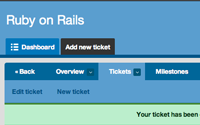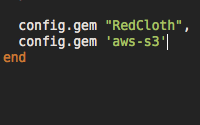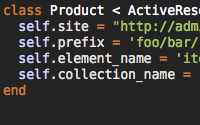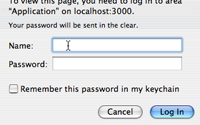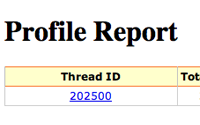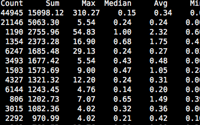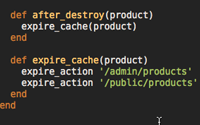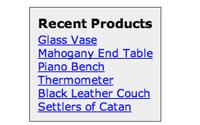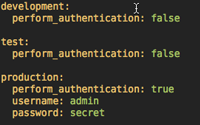Types
- Free Episodes
- Pro Episodes
- Revised Episodes
Categories
- Active Record
- Active Resource
- Active Support
- Administration
- Ajax
- APIs
- Authentication
- Authorization
- Background Jobs
- Caching
- Code Walkthrough
- Controllers
- Debugging
- Deployment
- eCommerce
- Forms
- Mailing
- Models
- Performance
- Plugins
- Production
- Rack
- Rails 2.0
- Rails 2.1
- Rails 2.2
- Rails 2.3
- Rails 3.0
- Rails 3.1
- Rails 3.2
- Rails 4.0
- Refactoring
- Routing
- Search
- Security
- Testing
- Tools
- Views
Contributing to Rails with Git
If you want Rails to behave a certain way, try changing it and submitting a patch. This episode will show how to do exactly this using Git.
(11 minutes)
Gem Dependencies
In Rails 2.1 we now have the ability to set gem dependencies. Now it's easier than ever to specify which ruby gems our rails app relies on.
(6 minutes)
More on ActiveResource
See how to handle authentication and custom actions using ActiveResource in this episode.
(8 minutes)
HTTP Basic Authentication
Rails 2.0 offers an extremely easy way to do HTTP basic authentication. See how in this episode.
(4 minutes)
Request Profiling
You can use profiling to determine where the performance bottlenecks are in specific Rails actions. Watch this episode for details.
(10 minutes)
Analyzing the Production Log
In order to improve performance of your Rails application you need to find the bottlenecks. A great starting point is your production log. In this episode you will see how to use RAWK to analyze your log file and determine which controller actions take up the most processing time.
(5 minutes)
Generating PDF Documents
In this episode I will show you how to create PDF documents using the excellent PDF::Writer gem.
(7 minutes)
Action Caching
Action caching behaves much like page caching except it processes the controller filters. You can also make it conditional as seen in this episode.
(7 minutes)
Fragment Caching
Sometimes you only want to cache a section of a page instead of the entire page. Fragment caching is the answer as shown in this episode.
(6 minutes)
YAML Configuration File
Application configuration shouldn't be spread throughout your code base. Instead a much better place to put it is an external YAML file. See how to do that in this episode.
(7 minutes)

